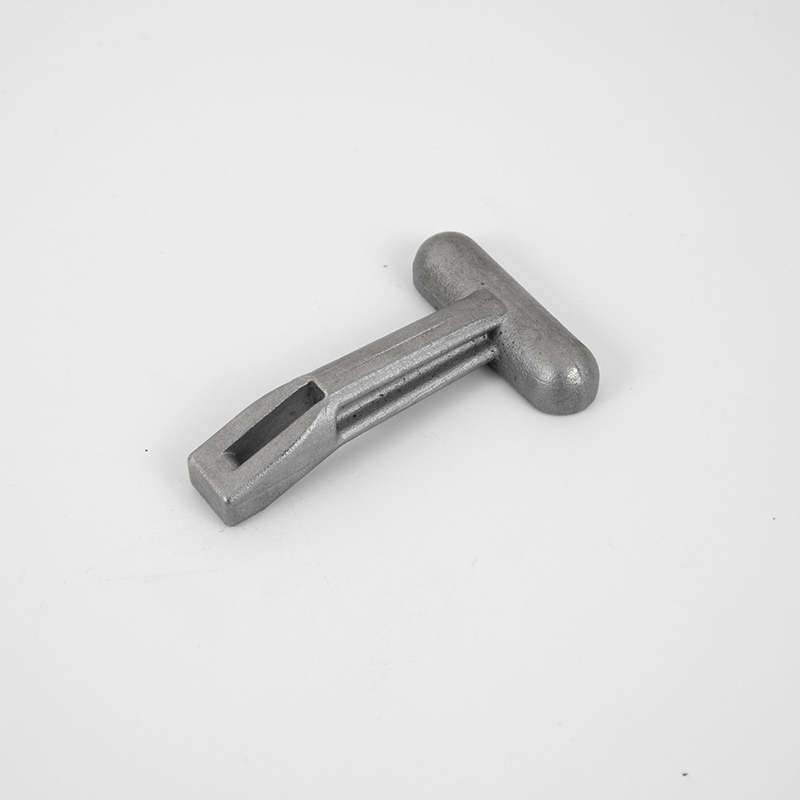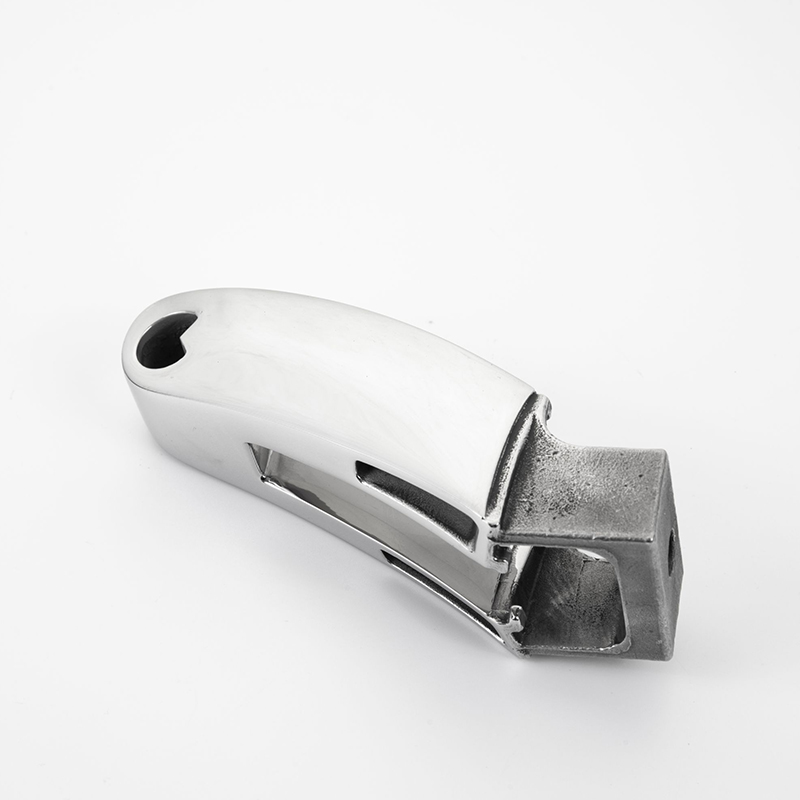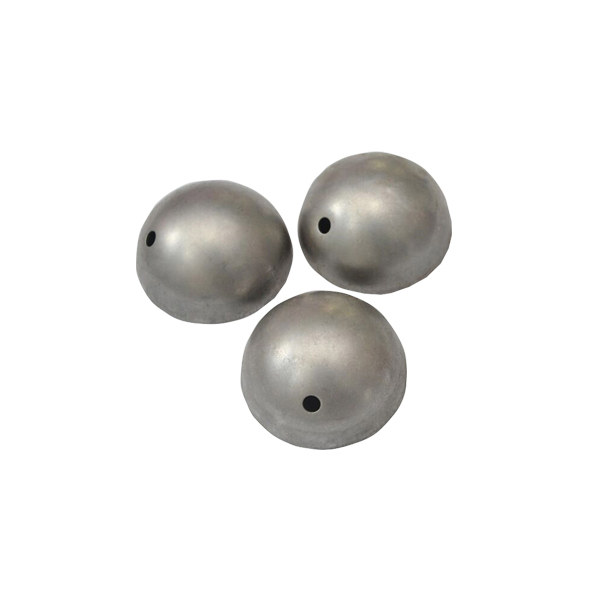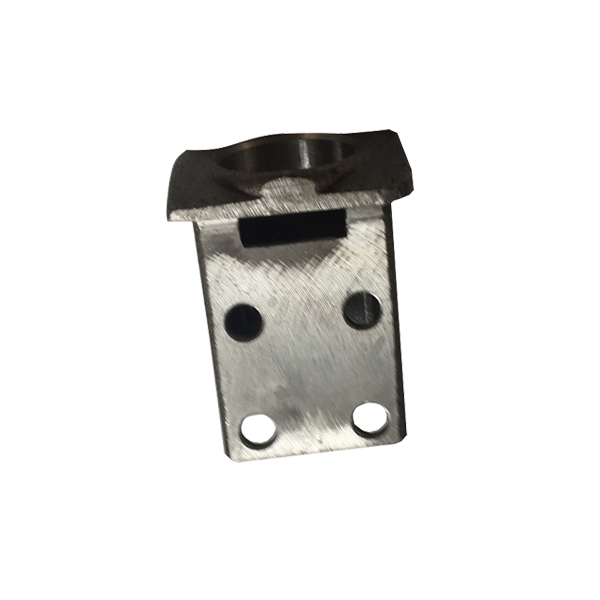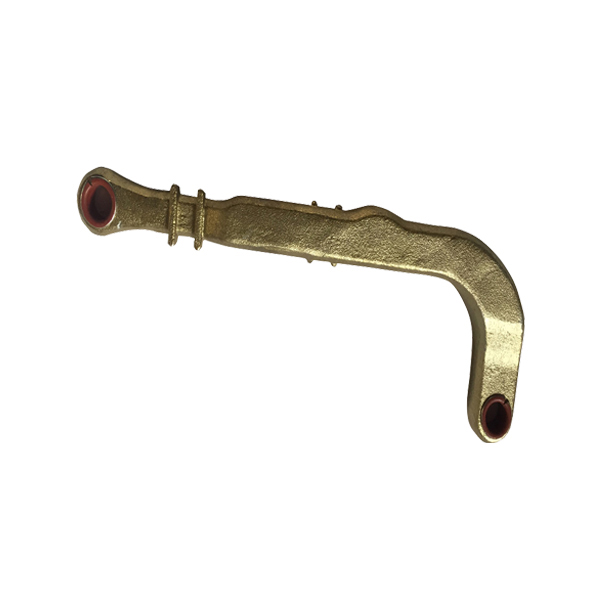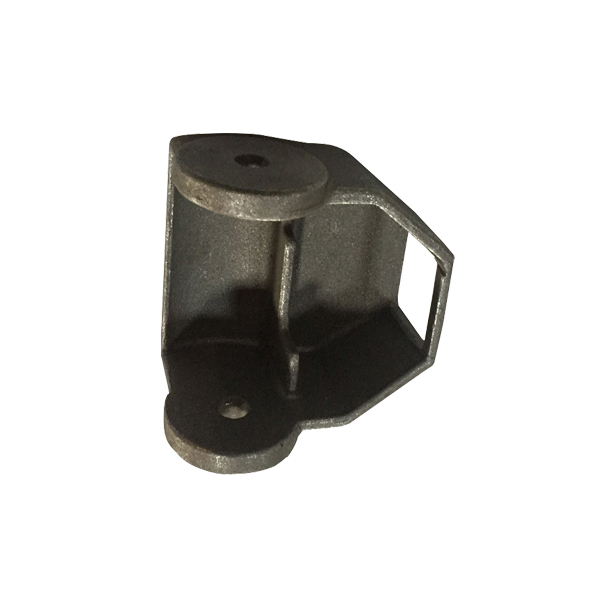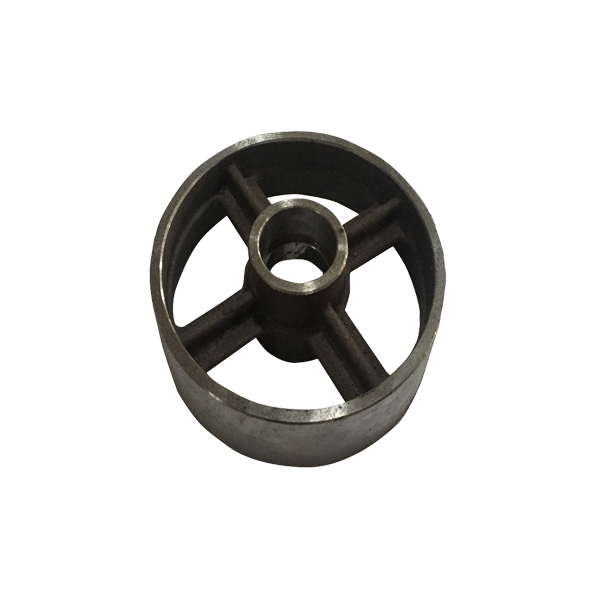Products
Ductile Iron Water Glass Casting
You can rest assured to buy customized Ductile Iron Water Glass Casting from us. We look forward to cooperating with you, if you want to know more, you can consult us now, we will reply to you in time!Ductile iron water glass casting is a casting process that is similar to iron water glass casting, but ductile iron is used instead of gray iron. Ductile iron is also known as nodular cast iron because of the spherical nodules of carbon that are formed during the casting process
Send Inquiry
Product Description
What is Ductile Iron Water Glass Casting?
Ductile iron water glass casting is a casting process that involves the use of ductile iron and water glass as the primary binder material to hold the sand particles together in the mold. This process is similar to iron water glass casting, but instead of gray iron, ductile iron is used, also known as nodular cast iron. Ductile iron is called so because it has nodules of graphite that give it greater ductility, which results in higher toughness and strength.
The process typically involves the following steps:
Pattern Creation: A pattern or model is created that represents the final shape of the product.
Coating the Pattern: A thin layer of water glass solution is coated on the pattern to create a binder.
Preparing the Molding Sand: Sand mixed with water glass solution is used to prepare the molding sand, also known as the "facing material."
Molding: The pattern coated with the water glass solution is placed in the mold, and the facing material is then packed around the pattern. The mold cavity is created as the facing material dries and hardens.
Pouring: Once the mold is ready, molten ductile iron is poured into the mold cavity.
Cooling: The molten ductile iron is left to cool and solidify inside the mold.
Shakeout: After the ductile iron has cooled and solidified, the mold is broken apart, and the casting is removed from it via a process called shakeout.
Finishing: Any excess material or roughness is removed from the cast iron, and it is ready for use.
Ductile iron water glass casting has many benefits, such as creating complex shapes with high dimensional accuracy, excellent surface finish, and improved mechanical properties, making it a popular choice for producing parts in various industries, including automotive, agriculture, aerospace, and oil and gas.
The process typically involves the following steps:
Pattern Creation: A pattern or model is created that represents the final shape of the product.
Coating the Pattern: A thin layer of water glass solution is coated on the pattern to create a binder.
Preparing the Molding Sand: Sand mixed with water glass solution is used to prepare the molding sand, also known as the "facing material."
Molding: The pattern coated with the water glass solution is placed in the mold, and the facing material is then packed around the pattern. The mold cavity is created as the facing material dries and hardens.
Pouring: Once the mold is ready, molten ductile iron is poured into the mold cavity.
Cooling: The molten ductile iron is left to cool and solidify inside the mold.
Shakeout: After the ductile iron has cooled and solidified, the mold is broken apart, and the casting is removed from it via a process called shakeout.
Finishing: Any excess material or roughness is removed from the cast iron, and it is ready for use.
Ductile iron water glass casting has many benefits, such as creating complex shapes with high dimensional accuracy, excellent surface finish, and improved mechanical properties, making it a popular choice for producing parts in various industries, including automotive, agriculture, aerospace, and oil and gas.
Why is it Called Ductile Iron Water Glass Casting?
Ductile iron water glass casting is named so because it uses a combination of water glass and sand to create the mold, and ductile iron as the material to be cast. Ductile iron is also called "nodular iron" because of its spherical nodules of graphite, which make it more ductile and tougher compared to other types of iron.
In the ductile iron water glass casting process, a pattern is produced that represents the final shape of the product to be cast. Water glass solution is applied to the pattern as a binder, and a mixture of sand and water glass is used to create a mold around the pattern. Molten ductile iron is then poured into the mold, which takes the shape of the pattern when it cools. The resulting cast iron part is highly ductile and strong, with good mechanical properties.
Therefore, the term "ductile" is used in the name because this casting process primarily produces ductile iron parts. Water glass is used as the binder, and the term "casting" refers to the process of molding molten metal into a desired shape.
In the ductile iron water glass casting process, a pattern is produced that represents the final shape of the product to be cast. Water glass solution is applied to the pattern as a binder, and a mixture of sand and water glass is used to create a mold around the pattern. Molten ductile iron is then poured into the mold, which takes the shape of the pattern when it cools. The resulting cast iron part is highly ductile and strong, with good mechanical properties.
Therefore, the term "ductile" is used in the name because this casting process primarily produces ductile iron parts. Water glass is used as the binder, and the term "casting" refers to the process of molding molten metal into a desired shape.
What is the Ductile Iron Water Glass Casting Process?
Ductile iron water glass casting is a casting process that is similar to iron water glass casting, but it uses ductile iron instead of gray iron. The process involves the following steps:
Pattern Creation: The first step is to create a pattern or model that represents the final shape of the product.
Coating the Pattern: The pattern is coated with a layer of water glass solution, which acts as a binder for the sand.
Preparing the Molding Sand: Sand mixed with water glass solution is used to prepare the molding sand. This mixture is also known as the "facing material."
Molding: The water glass coated pattern is placed in a mold, and the facing material is packed around the pattern. The mold cavity is created as the facing material dries and hardens.
Pouring: Molten ductile iron is then poured into the mold cavity.
Cooling: The molten ductile iron is allowed to cool and solidify inside the mold.
Shakeout: After the ductile iron has cooled, the mold is broken apart, and the casting is removed from it via a process called shakeout.
Finishing: Any excess material or roughness is removed from the cast iron, and it is ready for use.
Ductile iron water glass casting is a cost-effective method of producing high precision parts with good mechanical properties and excellent surface finish. The process can produce ductile iron parts with high strength and toughness, making it an ideal choice for industries that require high-performance iron-based parts. These industries include automotive, agriculture, aerospace, oil and gas, and more. Overall, ductile iron water glass casting is a versatile and efficient process that can produce complex shapes quickly and accurately.
Pattern Creation: The first step is to create a pattern or model that represents the final shape of the product.
Coating the Pattern: The pattern is coated with a layer of water glass solution, which acts as a binder for the sand.
Preparing the Molding Sand: Sand mixed with water glass solution is used to prepare the molding sand. This mixture is also known as the "facing material."
Molding: The water glass coated pattern is placed in a mold, and the facing material is packed around the pattern. The mold cavity is created as the facing material dries and hardens.
Pouring: Molten ductile iron is then poured into the mold cavity.
Cooling: The molten ductile iron is allowed to cool and solidify inside the mold.
Shakeout: After the ductile iron has cooled, the mold is broken apart, and the casting is removed from it via a process called shakeout.
Finishing: Any excess material or roughness is removed from the cast iron, and it is ready for use.
Ductile iron water glass casting is a cost-effective method of producing high precision parts with good mechanical properties and excellent surface finish. The process can produce ductile iron parts with high strength and toughness, making it an ideal choice for industries that require high-performance iron-based parts. These industries include automotive, agriculture, aerospace, oil and gas, and more. Overall, ductile iron water glass casting is a versatile and efficient process that can produce complex shapes quickly and accurately.
What Materials can be Ductile Iron Water Glass Casting?
Ductile iron water glass casting is primarily used to cast ductile iron parts, but other metals can also be used in this process. Some of the materials that can be ductile iron water glass cast include:
Ductile iron: As the name suggests, ductile iron is the primary material used in ductile iron water glass casting.
Gray iron: Depending on the application requirements, gray iron can also be used as an alternative for ductile iron.
Steel: Some grades of steel, such as low carbon steel, can also be used in ductile iron water glass casting for parts that require high strength and toughness.
Copper and copper alloys: Materials such as brass and bronze, can also be used in ductile water glass casting.
The choice of metal material used in ductile iron water glass casting will depend on factors such as the specific application and required mechanical properties of the final product. It is important to note that the water glass binder may not provide the necessary strength for some metals, so alternative binders may be used for materials besides iron.
Ductile iron: As the name suggests, ductile iron is the primary material used in ductile iron water glass casting.
Gray iron: Depending on the application requirements, gray iron can also be used as an alternative for ductile iron.
Steel: Some grades of steel, such as low carbon steel, can also be used in ductile iron water glass casting for parts that require high strength and toughness.
Copper and copper alloys: Materials such as brass and bronze, can also be used in ductile water glass casting.
The choice of metal material used in ductile iron water glass casting will depend on factors such as the specific application and required mechanical properties of the final product. It is important to note that the water glass binder may not provide the necessary strength for some metals, so alternative binders may be used for materials besides iron.
What is Ductile Iron Water Glass Casting Used For?
Ductile iron water glass casting is used to produce iron parts that require high strength and toughness, with excellent surface finish and dimensional accuracy. The process is widely used by various industries that require medium to high volume production of highly complex shaped parts. Some of the applications of ductile iron water glass casting include:
Automotive industry: A range of parts used in automobiles, such as crankshafts, engine blocks, and suspension components, are produced using ductile iron water glass casting.
Construction industry: The process is used to produce parts used in the construction industry, such as manhole covers, drainage grates, and lamp posts.
Agriculture machinery: Parts such as tractor hubs, plowshares, and other agricultural machinery parts are also produced using ductile iron water glass casting.
Industrial machinery: Many cast iron components in industrial machinery are made using ductile iron water glass casting, including pumps and valves.
Aerospace: The aerospace industry uses ductile iron water glass casting to produce various parts such as landing gear components, engine fan blades, and structural components.
Ductile iron water glass casting provides a cost-effective way to produce complex and highly accurate parts. The process has a relatively short turnaround time, making it a preferred choice for a wide range of industries that require high precision parts produced in large volume with tight tolerances.
Automotive industry: A range of parts used in automobiles, such as crankshafts, engine blocks, and suspension components, are produced using ductile iron water glass casting.
Construction industry: The process is used to produce parts used in the construction industry, such as manhole covers, drainage grates, and lamp posts.
Agriculture machinery: Parts such as tractor hubs, plowshares, and other agricultural machinery parts are also produced using ductile iron water glass casting.
Industrial machinery: Many cast iron components in industrial machinery are made using ductile iron water glass casting, including pumps and valves.
Aerospace: The aerospace industry uses ductile iron water glass casting to produce various parts such as landing gear components, engine fan blades, and structural components.
Ductile iron water glass casting provides a cost-effective way to produce complex and highly accurate parts. The process has a relatively short turnaround time, making it a preferred choice for a wide range of industries that require high precision parts produced in large volume with tight tolerances.
What are the benefits of Ductile Iron Water Glass Casting?
Ductile iron water glass casting offers several benefits, including:
High Mechanical Strength: Ductile iron water glass casting produces parts that have high tensile strength, toughness, and ductility.
Dimensional Accuracy: Parts produced using ductile iron water glass casting have very high dimensional accuracy and surface finish, which makes them suitable for use in critical applications.
Cost-effective: Ductile iron water glass casting is a cost-effective method of producing high accuracy complex-shaped components compared to other manufacturing methods.
Complexity: The process is versatile and can be used to produce complex-shaped parts.
Production Volume: Ductile iron water glass casting is suitable for producing metal parts in small to high volumes with repetitive accuracy.
Reduced Machining: Parts produced using ductile iron water glass casting often require little or no further machining, thus resulting in cost savings.
Reduced Material Waste: The sand-based molds used in ductile iron water glass casting are reusable, and any excess material or scrap can be recycled, which reduces material waste and is environmentally friendly.
Versatility: The process can be used for different metals and alloys, offering a wide range of applications for various components across different industries.
Overall, the benefits of ductile iron water glass casting make it suitable for producing a variety of high-performance iron-based parts in different industries, including automotive, construction, aerospace, and many more.
High Mechanical Strength: Ductile iron water glass casting produces parts that have high tensile strength, toughness, and ductility.
Dimensional Accuracy: Parts produced using ductile iron water glass casting have very high dimensional accuracy and surface finish, which makes them suitable for use in critical applications.
Cost-effective: Ductile iron water glass casting is a cost-effective method of producing high accuracy complex-shaped components compared to other manufacturing methods.
Complexity: The process is versatile and can be used to produce complex-shaped parts.
Production Volume: Ductile iron water glass casting is suitable for producing metal parts in small to high volumes with repetitive accuracy.
Reduced Machining: Parts produced using ductile iron water glass casting often require little or no further machining, thus resulting in cost savings.
Reduced Material Waste: The sand-based molds used in ductile iron water glass casting are reusable, and any excess material or scrap can be recycled, which reduces material waste and is environmentally friendly.
Versatility: The process can be used for different metals and alloys, offering a wide range of applications for various components across different industries.
Overall, the benefits of ductile iron water glass casting make it suitable for producing a variety of high-performance iron-based parts in different industries, including automotive, construction, aerospace, and many more.
Product details

Hot Tags: Ductile Iron Water Glass Casting, China, Manufacturer, Supplier, Factory, Customized, Made in China
Related Category
Investment Casting
Shell Mold Sand Casting
Lost Foam Casting
Water Glass Casting
Lost Wax Casting
Die Casting
Precision Machining
CNC Machining
Turning Machining
Machining Workshop
Send Inquiry
Please Feel free to give your inquiry in the form below. We will reply you in 24 hours.
